Iran Windmill | Ancient Windmills in Iran
Throughout history, humans have harnessed the power of wind for various purposes. From crossing vast oceans to grinding grains and pumping water, the wind has played a crucial role in shaping our lives.
The first practical windmills, also known as Aasbaad in Farsi, emerged in Persia as early as the 5th century AD. These horizontal windmills featured long vertical driveshafts with rectangular sails covered in reed matting or cloth. They were utilized in homes, grist milling, and sugarcane industries, and their use spread across the Middle East, Central Asia, China, India, and Europe.
Today, visitors and researchers can witness the subtle yet remarkable mechanism of these Iran windmills in the provinces of Sistan-Baluchestan, South Khorasan, and Khorasan Razavi, providing a glimpse into how ancient Iranians harnessed the power of wind for their livelihoods.
Join us as we explore these mesmerizing Persian windmills and delve into their rich history, ingenious design, purpose, and when were the windmills invented.
The History of the Ancient Windmills of Iran
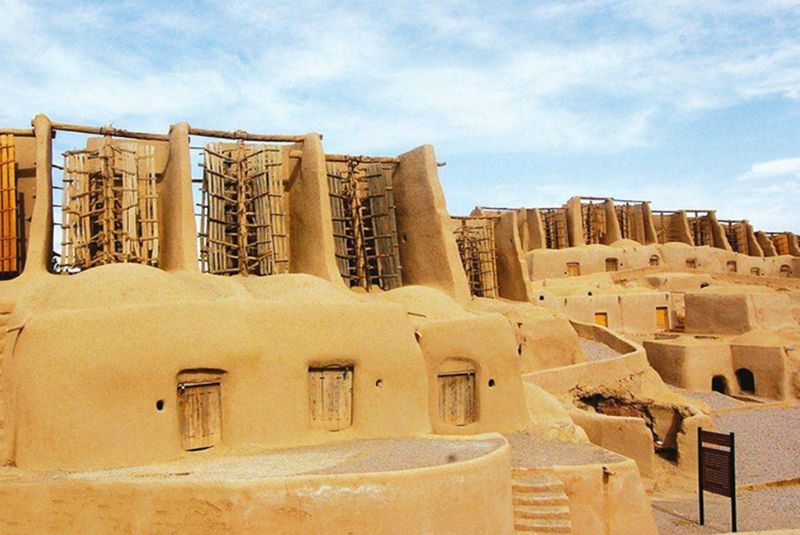
The history of ancient windmills in Iran dates back over 1500 years ago. The world's first wind building was constructed around the 5th-7th century AD in Sistan, Iran. These remarkable structures were built in the ancient village of Nashtifan, located in the southern parts of Khorasan Razavi province. The region is so well known for its powerful winds that have earned it the name "Nish Toofan," meaning "storm's sting." These strong winds have fueled the region's industrial creativity for centuries, with windmills being integral to its landscape.
Have you ever heard about Windcatchers in Iran?
Read more:
The Nashtifan windmills typically had between six and twelve blades covered with cloth or palm leaves and were registered as a national heritage site by Iran's Cultural Heritage Department in 2002.
The primary purpose of these Persian windmills was to grind edible seeds or sift them. These windmills are primarily constructed using clay, straw, and wood. The wooden blades of the windmills turn the grinding stones within clay rooms. Each Windmill consists of eight rotating chambers, each housing six vertical blades arranged like a wall with slits. As the chambers rotate under the force of the wind, the Windmill's main axle turns, connecting to grain grinders. The vibrations generated by this rotation gradually shift the grains from their holding container to the grain grinders, resulting in the production of flour.
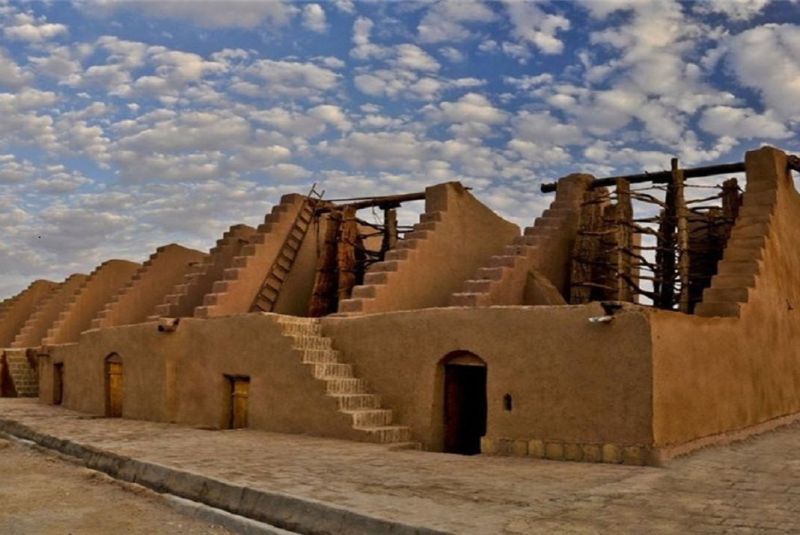
References to Aasbaads can be found in historical texts such as the book of Istakhari (before 941 AD) and one of Mas'udi's books (around 947 AD). Historians also point to a story of a miller killing the Sassanid king, Yazdgerd, which further attests to the antiquity of Iran's ancient windmills. The mention of Aasbaads in relation to the killing of Iranians in Elis under the command of Khalid provides additional evidence of the existence of windmills in Iran since ancient times. Stories also suggest the presence of watermills and windmills in Gorgan during the Umayyad period.
The book Matikan-e Sistan also highlights wind turbines as one of the industries of Sistan. Arab geographers have also made mention of these structures. When the Arabs entered Sistan, they were astonished by the ancient windmills of Iran, as recorded in historical accounts.
In addition, The book "Cities Called 'Iran during the Parthian and Sassanian Eras'" also mentions the presence of mills in several significant cities during those times. It also documents codified rules regarding mill usage, miller wages, and mill rent. Sistan is repeatedly mentioned in this valuable historical source.
| Read more: Elements of Persian Architecture
Who Invented the Windmill?
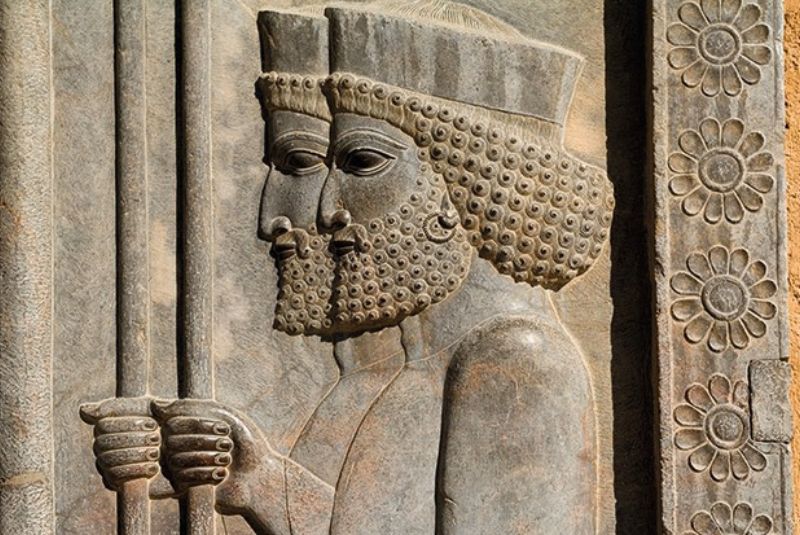
Although the Netherlands is renowned for its windmills, they were not the inventors of the world's first windmills. The origin of windmills has different theories. One theory suggests that a Greek inventor named Tesibius, who lived from 285 to 222 BC, may have invented the first windmills. However, the earliest known use of wind power for grain mills and water pumps was by the Persians around 500-800 AD and the Chinese around 1200 AD.
| Suggestion: Persian Empire | Facts & History of Achaemenids
The Etymology of the Word Aasbaad
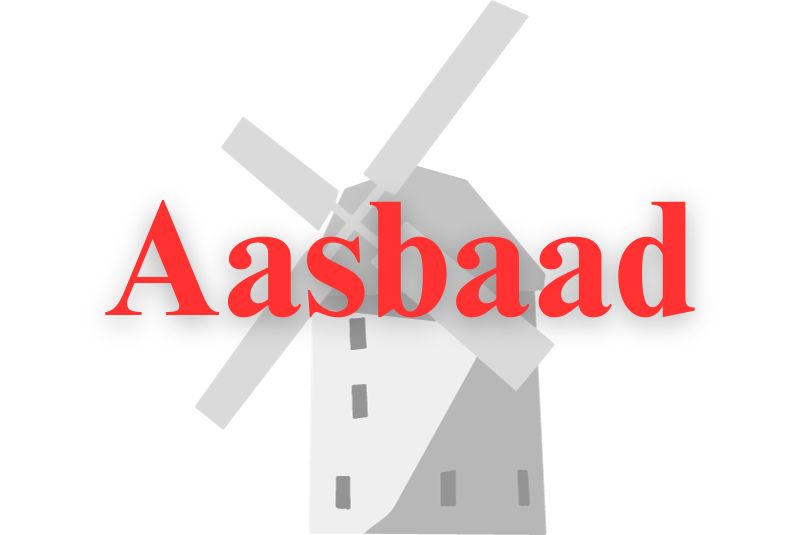
The word "Aasbaad" has an interesting etymology. In this context, the word "Aas" refers to a stone. When combined with "baad," it signifies the utilization of wind energy. Thus, "Aasbaad" can be understood as a stone that rotates using the power of the wind.
Similarly, we can explore other related terms. "Aas Aab" refers to a watermill, where "Aas" represents the stone and "Aab" denotes water. In this case, "Aas Aab" signifies a stone that rotates with the energy of water.
Likewise, "Aas Dast" comprises "Aas" meaning stone and "Dast" representing the hand. Therefore, "Aas Dast" can be interpreted as a stone that rotates with the power of the hand.
| Learn more: Persian Language
The Origins of Windmills in Iran

The origins of windmills in Iran can be traced to various cities such as Nehbandan, Khaf, Nashtifan, Khargerd, and Barabad. However, among these locations, only the Nashtifan Aasbaads have survived over the years, with some of them still functioning today. The remnants of these ancient windmills can be found in the historical site and ancient site of Rostam Hozdar Castle (Qalcheh) near Shahr-e Sukhteh, as well as other areas in Sistan.
One notable example of Aasbaads is found in Tabas Messina, located on the desert's edge. These structures are built on two floors and serve not only as a place for the Aasbaad stone but also include a section for storing wheat and flour. These Aasbaads date back to the Qajar period, showcasing the historical significance and longevity of windmill technology in Iran.
These old windmills in Iran hold significant historical and cultural value. While some of them are still symbolically used to produce flour using traditional methods, many others have suffered natural damage and are in danger of being lost forever.
Windmill Purpose

The vital need for flour and semolina drove the emergence of windmills in Iran. The concentration of population in Sistan and neighboring cities made it impractical to rely on animal and manual mills. Additionally, as agriculture developed and agricultural production increased, a stronger energy source was necessary beyond human and animal capabilities. Ancient windmills harnessed the power of the wind to mechanically and continuously process grains into flour and bulgur.
These structures operated non-stop, transforming grain into flour, bran, and semolina, providing a stable income and establishing dependence on this invention.
| Discover: Shushtar Hydraulic System | Ancient Engineering Wonder
How Iran Windmills Work
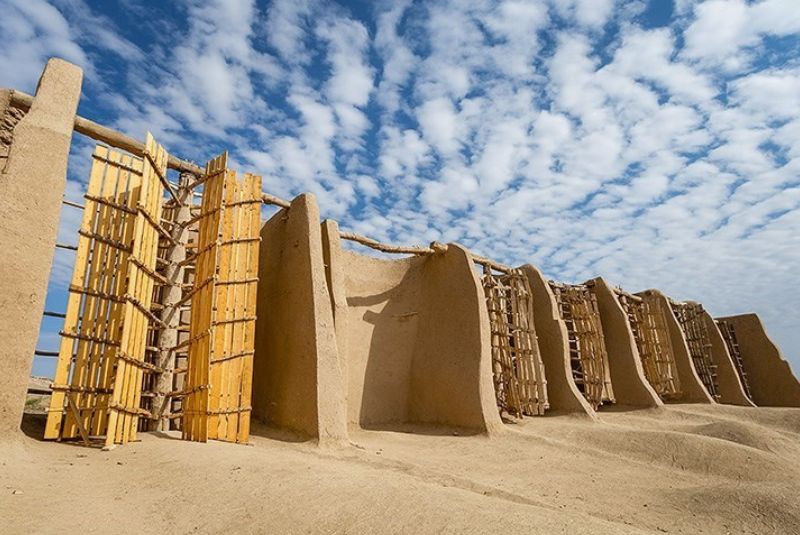
The ancient windmills of Iran were constructed using simple materials such as wood and mud. The structure of these windmills consisted of two main floors: the ground floor, known as "Aas Khaneh," and the second floor, called "Parreh Khana."
The Aas Khaneh, located on the ground floor, served as the main hall of the Windmill. It housed a large circular stone used for grain crushing, making it the central area for milling activities. Additionally, this floor was used for storing grains.
On the second floor, the Parreh Khana, beams and poles were connected to the structure. This floor acted as the roof of the Aasbaad and housed the wooden blades of the Windmill. These blades were designed to be lightweight yet sturdy enough to move the large stone below.
The ancient windmills of Iran utilized the famous 120-day winds of Sistan, which blew from the middle of June to the beginning of October in the eastern regions of Iran. These winds entered the blades of the Aasbaads and set them in motion. Locally, these winds were known as "Siahbaad" or "Baadkuh" or "black winds" in South Khorasan. They are known for their high continuity, speed, and timing; these winds sometimes reach up to 120 kilometers per hour.
Components of the Ancient Windmills in Iran

The components of these ancient windmills included various elements:
- Millstones: Consisting of two wide cylindrical stones, the top stone rotated on the bottom stone, with wheat entering through a hole in the middle and exiting through the gap between the two stones.
- Bridge: This was a flattened branch covered with foliage.
- Kharpol: Positioned above the mill, this column made of pine wood connected horizontally to the side walls of the Windmill. It was attached to the mill with a wooden axis, and its purpose was to prevent lateral movements while allowing the vertical axis of the wheel and blade to connect to the horizontal truss. A wooden lever facilitated the movement of the axis, ensuring smooth rotation.
- Transformation Piece: This component, measuring 8 meters in length, 35 cm in diameter, and 101 cm in thickness, landed from the second part of the mill on the face of the stone, setting it in motion.
- Arm or Bahu: These were wooden levers, approximately 115 cm long and 7 cm in diameter, connecting the blades to the transformation piece. They acted as interfaces, transferring the rotational force of the blades, caused by the wind, to the transformation piece. Each blade typically had 6 to 7 arms.
- Vane: A lever made of wood, approximately 1 meter long, 14 cm wide, and 1 cm thick. Each group of blades had 4 or 5 vanes.
- Ney Baad (wind reed): This woven tool functioned like a mat, regulating the intensity of the wind passing through the openings. It allowed for the adjustment of the Windmill's speed or complete cessation when necessary.
- Dargah (opening): The distance between the arms, usually around 62 cm.
- Metal Tureh: A metal rod, 36 to 50 cm in length, with varying widths and diameters. It was installed at the end of the transformation piece and bifurcated at the end.
- Bifurcated Lever: A wooden lever with a height of 140 cm, featuring a bifurcated end.
- Moshteh Lever: A sturdy, conical wooden lever, 40 to 50 cm in height and 3 to 4 cm in diameter at its narrowest part.
Bottom Line
Iran Windmills, known as Aasbaads, were born out of the necessity to meet the growing demand for flour and semolina.
The windmills harnessed the power of the wind, providing a continuous and reliable energy source for grain milling. They not only played a crucial role in meeting the population's needs but also served as predecessors to modern power plants, including hydro, wind, solar, nuclear, fossil, and hybrid systems. The ancient windmills of Iran are the ancestors of today's wind generators. Book one of our tour packages to visit various tourist destinations in Iran and witness the legacy of our wise ancestors firsthand.
Share your story!
Comment below and let us know about your Experience.
Your story inspires others!


Comment
Leave a Comment